Pale purple coneflower is an elegant, tall coneflower of Central Plains prairies. A very adaptable native perennial, it thrives in medium to dry soils and full sun. The large flowers draw in bees and butterflies to the early-summer garden, rewarding pollinators with both pollen and nectar.
The pale pink dangling petals flutter in the wind and resemble streamers on a parade float. Combine pale purple coneflower with your favorite yellow, blue or violet prairie plants to create a pleasing color combination in your perennial garden, informal naturalized planting or prairie garden.
Browse plants native to other regions of the U.S.
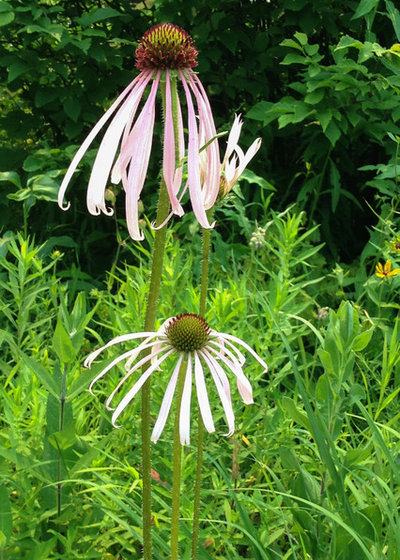
Holm Design & Consulting LLC
Botanical name: Echinacea pallida Common name: Pale purple coneflower
Origin: Native to central North America, from Iowa southward to Texas and eastward to Indiana in the north and Louisiana in the south; rare in Alabama, Wisconsin, Tennessee and North Carolina
Where it will grow: Hardy to minus 20 degrees Fahrenheit, or minus 29 degrees Celsius (USDA zones 5a to 8b; find your zone)
Typical plant communities: Medium to dry prairies with well-drained soil
Soil requirement: Sand to clay-loam
Light requirement: Full sun
Mature size: 2 to 5 feet tall and 1 foot wide

Holm Design & Consulting LLC
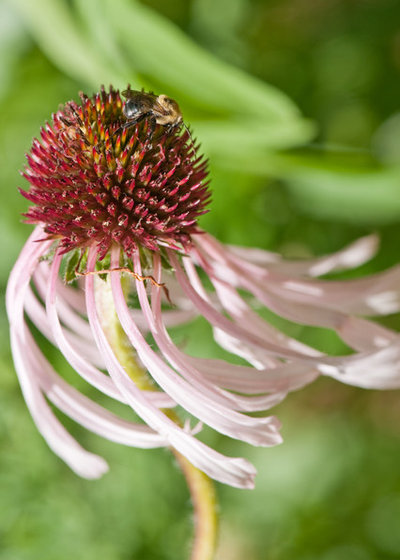
Holm Design & Consulting LLC
Benefits and tolerances: Tolerates dry sites and full sun
Seasonal interest: Light pink flowers open in June through July; upright flower stalks and large seed cones provide interest after flowering in summer and fall
When to plant: Spring or fall (potted plants are available from most native-plant nurseries in regions where this perennial occurs)
Shown: The long ray florets dangle like fingers and flutter in the wind.
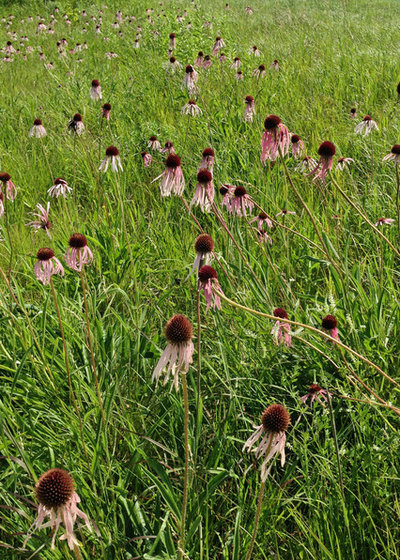
Holm Design & Consulting LLC
Distinguishing traits. Pale purple coneflower has a graceful, delicate form, large cones and dangling petals, called ray florets, which flutter in the wind. Though this species is not as vibrantly colored as purple coneflower (
Echinacea purpurea), its soft hue complements the bright green new growth of spring grasses.
How to use it. Mass many plants together in an opening in the middle or back of an established perennial garden, or use it in an informal prairie planting.
Combine this native perennial with beardtongue (
Penstemon spp.), prairie phlox (
Phlox pilosa), anise hyssop (
Agastache foeniculum), gray-headed coneflower (
Ratibida pinnata) and stiff goldenrod (
Oligoneuron rigidum), and with prairie grasses, such as little bluestem (
Schizachyrium scoparium) or prairie dropseed (
Sporobolus heterolepis).
Do not plant this tall, lanky plant right next to a walkway or another area where foot traffic occurs, to prevent the flower stalks from having an opportunity to flop over.
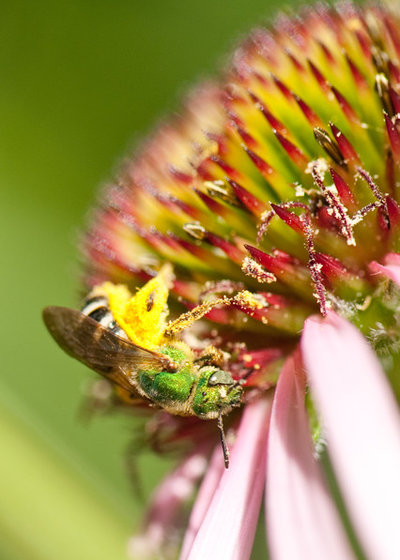
Holm Design & Consulting LLC
Planting notes. Plant in full sun in any well-drained soil.
Pale purple coneflower has long, upright flower stalks. Plant in masses or with tall plants, such as grasses or other sturdy perennials, that will help provide structural support to the stems. If you were to plant a single plant in the garden, the flower stalk would very likely fall over.
Shown: A female metallic green sweat bee (
Agapostemon virescens) foraging on the flower head
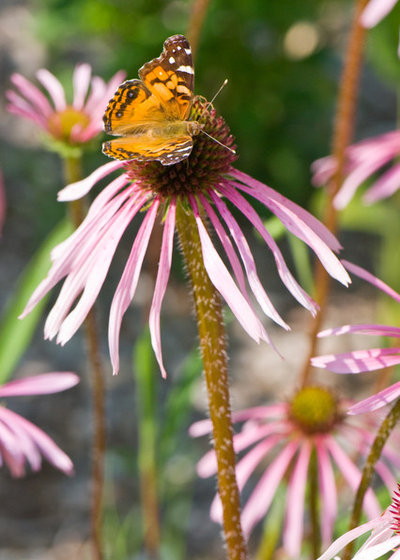
Holm Design & Consulting LLC
Pollinator notes. Pollen and nectar are produced primarily in the disc florets clustered on the central cone. The flower development begins in the outer, bottom ring of the central cone in the ray florets (florets with petals), then continues spiraling upward toward the top of the cone with the development of the disc florets. The disc florets produce pollen first, then nectar.
Insects, such as bees and butterflies, visiting for nectar are therefore foraging next to the newest flowers that are producing pollen, increasing the opportunity for the flower to have its pollen transported by the visiting insects. Many types of native bees visit the flowers, including green sweat bees, sweat bees, long-horned bees, leafcutter bees and bumblebees.
Look for several types of butterflies as well; the cone provides a large, stable platform on which they perch and from where they probe each disc floret with their tongue for nectar.
Shown: An American lady butterfly (
Vanessa virginiensis)





